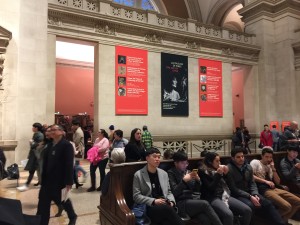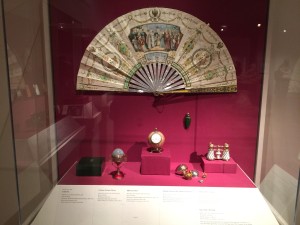Dear Wellness Seekers,
Welcome Easter With Faberge Eggs Extraordinaire is an experience Spanista wants to share as we begin the countdown to the celebration of Easter. While in New York City I visited The MET and discovered a delicious Imperial Faberge Egg Collection. I find the history of these artisan eggs so enchanting and at the same time so sad as the person who commissioned them to express his great love to his wife as a commemorative gift each Easter, but their journey in life along with their family came to a tragic tragic end leaving the fantastical eggs to pass to new hands. The inspiration sprung from the mind of Emperor Alexander III who wanted to give a gold egg to Princess Marie Fedorovna to celebrate their 20 wedding Anniversary conceiving of creating these original works of art. It is said he gave detailed instructions to Faberge – it delighted the princess so it became an annual tradition so for 32 years. Each egg an artisan tour de force, always unique holding a surprise aligning with the theme.took a year or more to make, involving a team of highly skilled craftsmen who were sworn to secrecy.
commemorative gift each Easter, but their journey in life along with their family came to a tragic tragic end leaving the fantastical eggs to pass to new hands. The inspiration sprung from the mind of Emperor Alexander III who wanted to give a gold egg to Princess Marie Fedorovna to celebrate their 20 wedding Anniversary conceiving of creating these original works of art. It is said he gave detailed instructions to Faberge – it delighted the princess so it became an annual tradition so for 32 years. Each egg an artisan tour de force, always unique holding a surprise aligning with the theme.took a year or more to make, involving a team of highly skilled craftsmen who were sworn to secrecy.
Peter Carl Faberge (1846-1920)was a visionary and talented artisan and jeweler. In 1872 he took over his father’s small jewelry atelier in Saint  Petersburg and within forty years had transformed it into the world’s largest enterprise of its kind, employing some five hundred craftsmen and designers. The firm built a devoted clientele that included cabinet ministers and the newly rich and, above all, members of the Russian imperial family, the Romanov, for whom they made the most precious pieces and extraordinary Easter eggs. In 1017 the Russian Revolution brought an end to the Romanov dynasty and a definitive halt to the House of Faberge. Peter Carl Faberge died in exile in Lausanne, Switzerland, in 1920. Over the 50 eggs Faberge made and delivered to the Imperial family 43 have survived.
Petersburg and within forty years had transformed it into the world’s largest enterprise of its kind, employing some five hundred craftsmen and designers. The firm built a devoted clientele that included cabinet ministers and the newly rich and, above all, members of the Russian imperial family, the Romanov, for whom they made the most precious pieces and extraordinary Easter eggs. In 1017 the Russian Revolution brought an end to the Romanov dynasty and a definitive halt to the House of Faberge. Peter Carl Faberge died in exile in Lausanne, Switzerland, in 1920. Over the 50 eggs Faberge made and delivered to the Imperial family 43 have survived..jpg)
.jpg)
Welcome Easter With Faberge Eggs Extraordinaire salutes a visionary woman Matilda Geddings Gray (1885-1971) acquired her first piece of Faberge in 1933. An artist herself with a refined aesthetic sensibility, she was already wealthy and sophisticated collector who had begun buying Faberge when the Russian was almost unknown in the United States. Upon her death, her collection passed to a foundation she had established in 1069, with the express wish that a broad public should be able to enjoy it. This long-term loan to the Metropolitan Museum of Art features a selection form Matilda Geddings Gray Foundation’s sumptuous collection of Faberge, one of the finest in the world.
Enjoying beautiful treasures like these enrich our souls while helping us putting the past in perspective. It causes one to reflect upon the choices we make and the consequences that follow as we move closer to Easter.
To Your Self Care Journey To Joy,
.png)
.png)
.png)
.png)
.png)
.jpg)

.jpg)